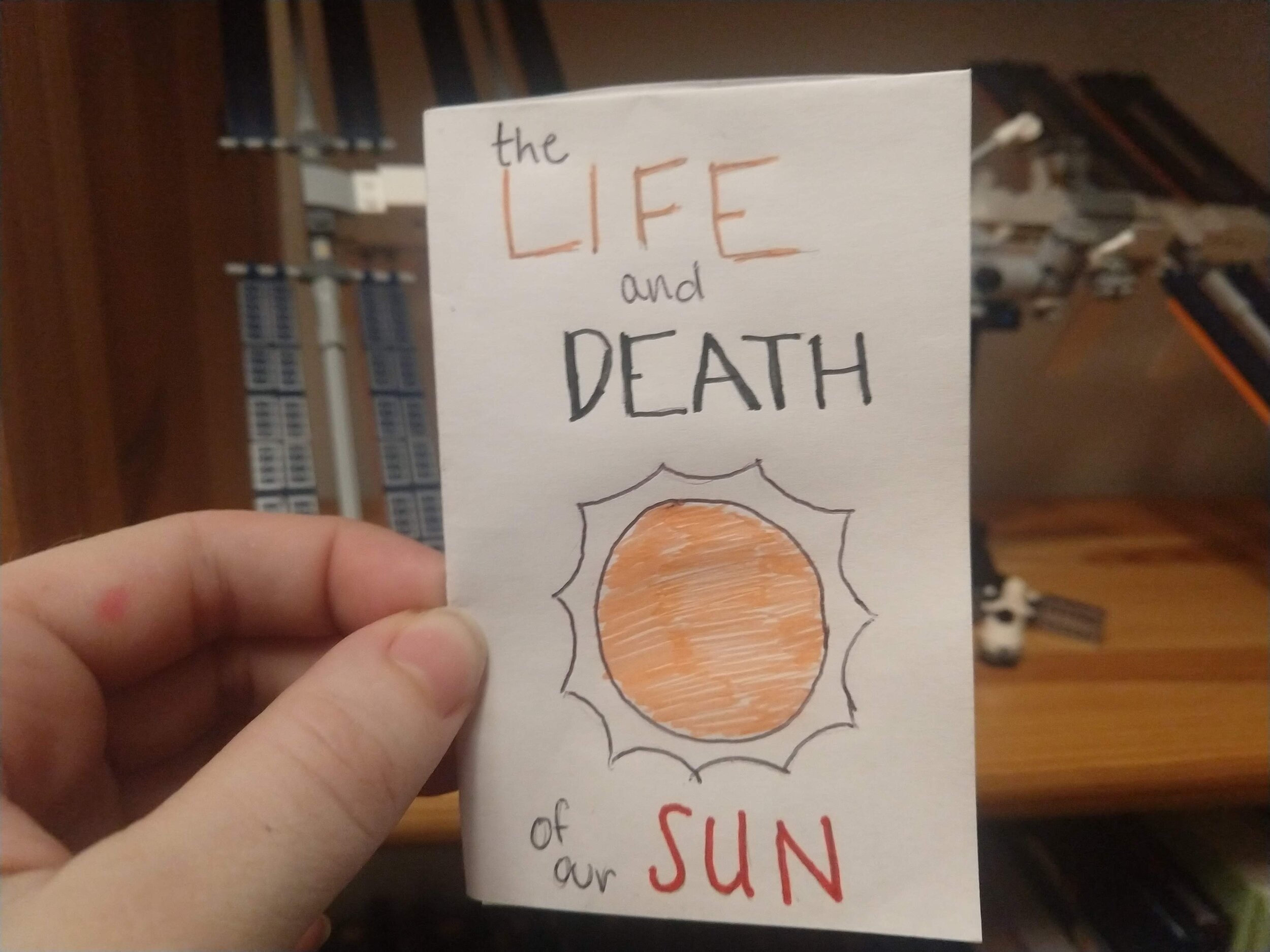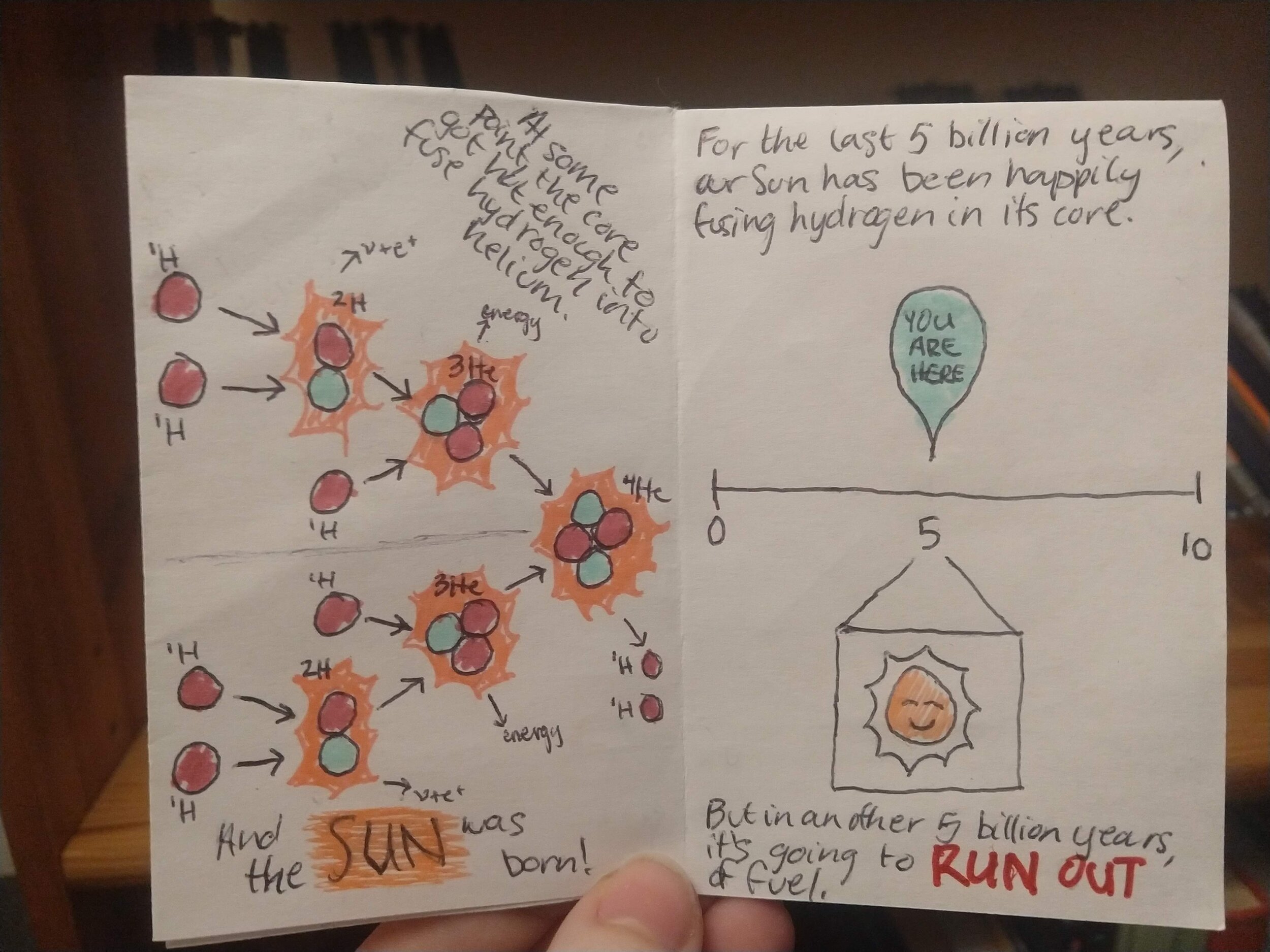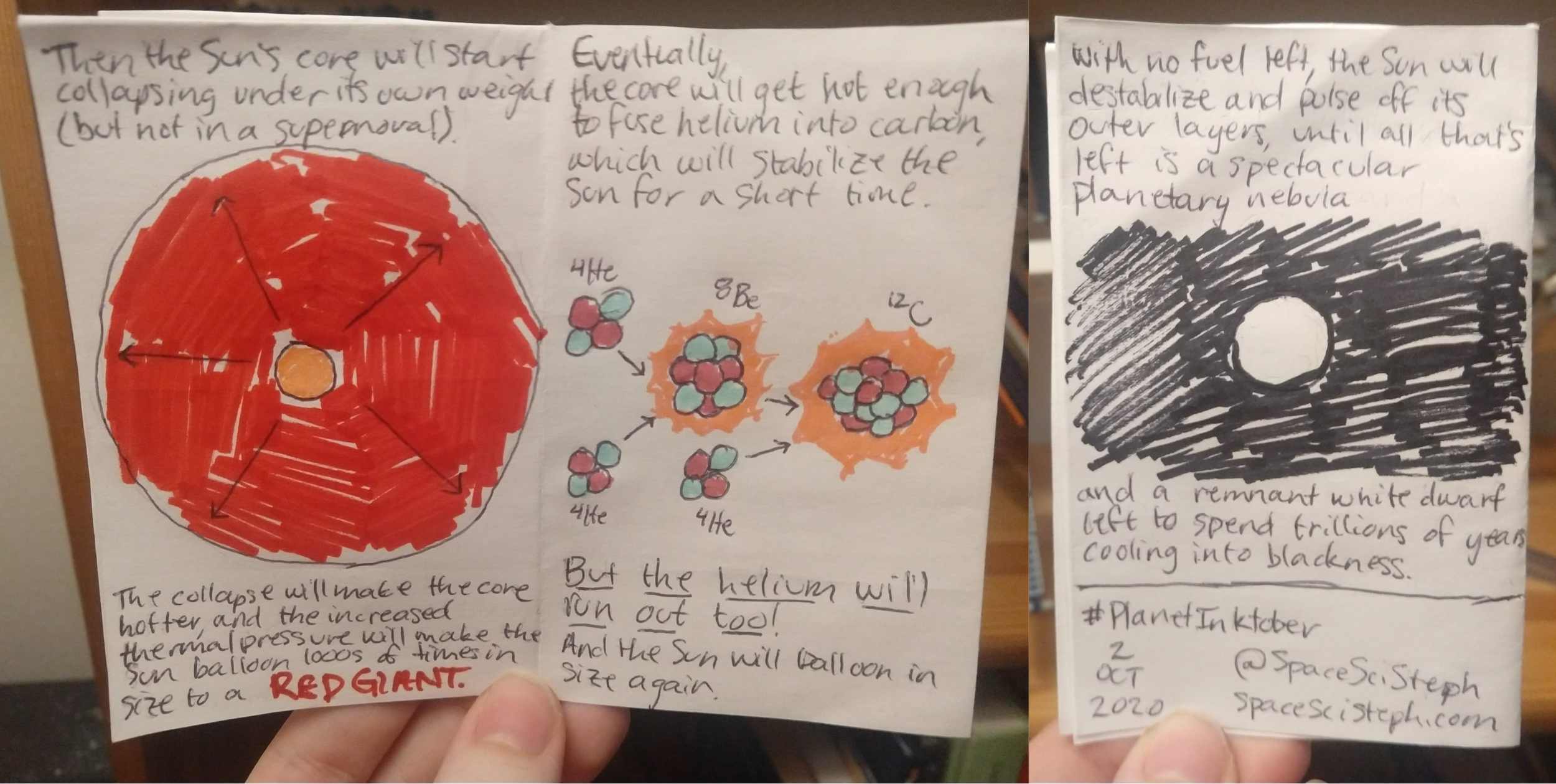#PlanetInktober Day 2: The Sun
/I gotta say, I’m liking this zine adventure so far.
Today’s theme was the Sun! So I made a mini zine about the Life and Death of the Sun: how it started, and how it’ll end.
I’d love to know what you think! Hit the like button below or leave a comment :)
The Life and Death of our Sun
All stars begin as giant clouds of gas and dust. Out Sun began its life the same way.
As the gas + dust swirled, it condensed under its own gravity. And as it condensed, it got hotter and hotter.
At some point, the core got hot enough to fuse hydrogen into helium.
For the last 5 billion years, out Sun has been happily fusing hydrogen in its core. But in another 5 billion years it’s going to RUN OUT of fuel.
Then the Sun’s core will start collapsing under its own weight (but not in a supernova!). The collapse will make the core hotter and the increased thermal pressure will make the Sun balloon 1000s of times in size to a RED GIANT.
Eventually, the core will get hot enough to fuse helium into carbon, which will stabilize the Sun for a short time. But the helium will run out too! And the Sun will balloon in size again.
With no fuel left, the Sun will destabilize and pulse off its outer layers, until all that’s left is a spectacular planetary nebula and a remnant white dwarf left to spend trillions of years cooling into blackness.





